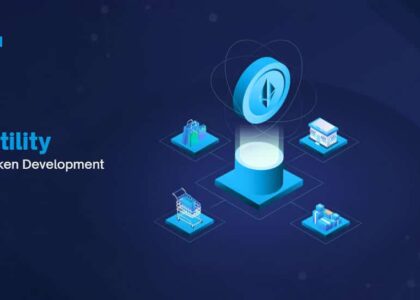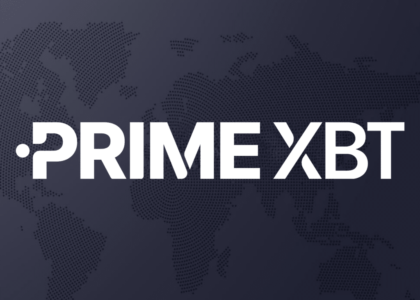In the rapidly evolving world of cryptocurrency and blockchain technology, new platforms, services, and terminologies are constantly emerging. One such term gaining traction is “Tokenly.” Although not yet a universally defined standard like Bitcoin or Ethereum, Tokenly represents a concept, platform, or initiative that leverages blockchain-based tokens to empower users, businesses, and developers in various ways. In this article, we will break down the meaning of Tokenly, explore its applications, and discuss its potential impact in the decentralized digital economy.
What is Tokenly? A Simple Definition
At its core, Tokenly refers to a platform or framework built around the idea of issuing, managing, and using digital tokens. Tokens are digital representations of value, rights, or assets that exist on a blockchain. These tokens can be used for various purposes, including access control, content monetization, rewards, trading, identity management, and more.
The word “Tokenly” combines “token” with the suffix “-ly,” which implies a mode or manner of operation. Thus, “Tokenly” could be interpreted as “in a token-based way” or “token-powered.” It embodies the shift from centralized control to decentralized token-driven ecosystems.
Origin and Context
While the term “Tokenly” may be generic, it has also been associated with specific projects in the crypto space, such as the early token platform founded by entrepreneur Adam B. Levine (of Let’s Talk Bitcoin). The original Tokenly initiative focused on enabling anyone to create, distribute, and manage digital tokens without needing deep technical expertise.
Today, however, the meaning has broadened and evolved. Many developers, companies, and creators are using “tokenly” models or systems to build blockchain applications, NFT marketplaces, DeFi services, and digital identity solutions. It is no longer just a brand—it’s a concept and approach to doing things using blockchain-based tokens.
Core Concepts Behind Tokenly
Let’s explore the core principles and ideas behind a “tokenly” system:
1. Tokenization of Assets
Tokenly systems allow real-world or digital assets to be represented as blockchain tokens. This includes:
- Real estate (tokenized property shares)
- Art and collectibles (NFTs)
- Music, videos, and content (token-gated access)
- Identity and credentials (digital ID tokens)
By tokenizing assets, they become easily transferable, divisible, and programmable, unlocking new economic models.
2. Decentralization
Tokenly platforms prioritize decentralization. Unlike traditional systems where a central authority controls user data, access, and rights, tokenly ecosystems allow users to maintain control over their tokens and interactions using private wallets.
3. Peer-to-Peer Interaction
Tokenly systems support direct peer-to-peer exchanges without intermediaries. This is achieved through smart contracts, which automate transactions and enforce rules on-chain.
4. Permissionless Innovation
Anyone can build or interact with tokenly platforms without needing approval from a central authority. This supports open-source development and fosters a diverse range of decentralized apps (dApps).
5. Ownership and Access Rights
Tokens are not just currencies. In a tokenly model, they can represent ownership, membership, or access rights. For example:
- A token might grant access to a private Discord server.
- Holding a token might give voting power in a DAO (Decentralized Autonomous Organization).
- Creators can use tokens to monetize their work and reward fans.
Practical Examples of Tokenly Systems
Here are a few real-world scenarios where Tokenly concepts are being used:
1. NFT Marketplaces
In NFT platforms, creators issue unique tokens that represent ownership of digital art, music, or collectibles. These platforms follow a tokenly structure by:
- Allowing artists to mint tokens
- Enabling users to trade them
- Automating royalties through smart contracts
2. Play-to-Earn Games
Blockchain games like Axie Infinity or Decentraland use in-game tokens that can be earned, traded, or spent. These tokens represent digital assets or currencies and create a “tokenly” economy within the game.
3. Token-Gated Content
Some platforms allow creators to lock content behind token ownership. Only users who hold specific tokens can access videos, articles, courses, or music. This is especially popular among web3 content creators.
4. Decentralized Finance (DeFi)
In DeFi platforms, tokens serve as financial instruments. They can represent lending rights, governance power, or yield-farming rewards. These token-centric systems run without banks or brokers.
Benefits of a Tokenly Approach
Adopting a tokenly framework brings several advantages:
✅ Ownership
Users have true ownership of their assets. Whether it’s an NFT, access token, or digital currency, control lies with the user—not the platform.
✅ Transparency
All token transactions are recorded on a public blockchain. This makes the system auditable and resistant to manipulation.
✅ Efficiency
Automated smart contracts eliminate middlemen, reducing costs and increasing speed.
✅ Incentives
Tokenly systems can create powerful incentive structures. For example, users can earn tokens by contributing to a project or platform, helping grow the ecosystem organically.
Challenges of Tokenly Ecosystems
Despite their benefits, tokenly systems face certain challenges:
❌ Scalability
Blockchain networks can become slow or expensive when handling many transactions.
❌ User Experience
Using wallets, gas fees, and private keys can be confusing for non-technical users.
❌ Security Risks
If smart contracts are not audited properly, they can be exploited.
❌ Regulatory Uncertainty
Governments are still figuring out how to classify and regulate tokens. This can create uncertainty for developers and investors.
The Future of Tokenly Systems
As blockchain technology matures, we can expect Tokenly platforms to become more user-friendly, scalable, and integrated into mainstream applications. Key trends that will shape the future include:
- Layer 2 scaling solutions (like Arbitrum and Optimism)
- Interoperability between different blockchains
- Web3 identity and reputation tokens
- AI-integrated token economies
- Mainstream adoption in gaming, education, and media
Ultimately, the “Tokenly” world is about empowering users with programmable digital rights that can be traded, monetized, and used across decentralized applications.
Conclusion
Tokenly is more than just a term—it’s a representation of a token-first future. Whether it refers to a specific platform or a general approach to building blockchain-based ecosystems, it highlights the growing importance of tokenized ownership, decentralized interaction, and peer-to-peer value exchange.
As crypto adoption grows, understanding Tokenly models will be essential for developers, creators, businesses, and users looking to thrive in the decentralized economy.





